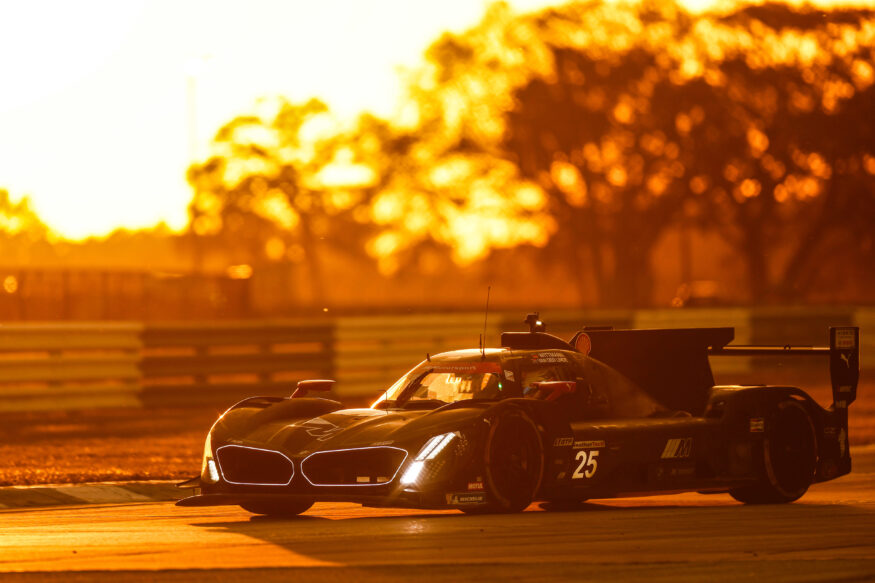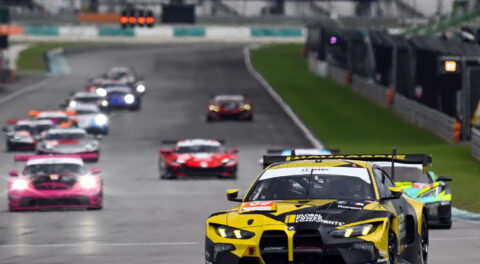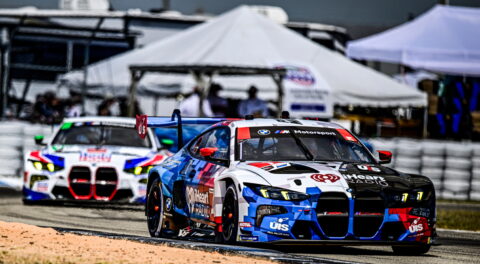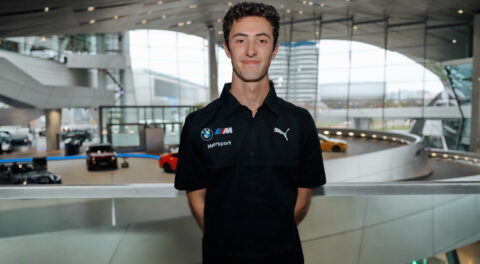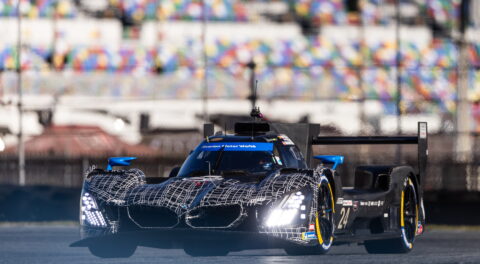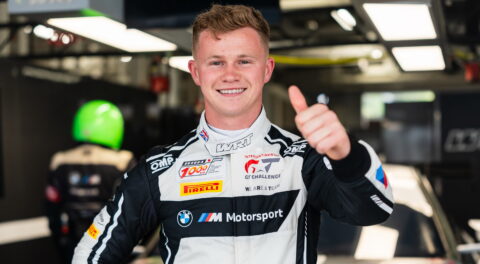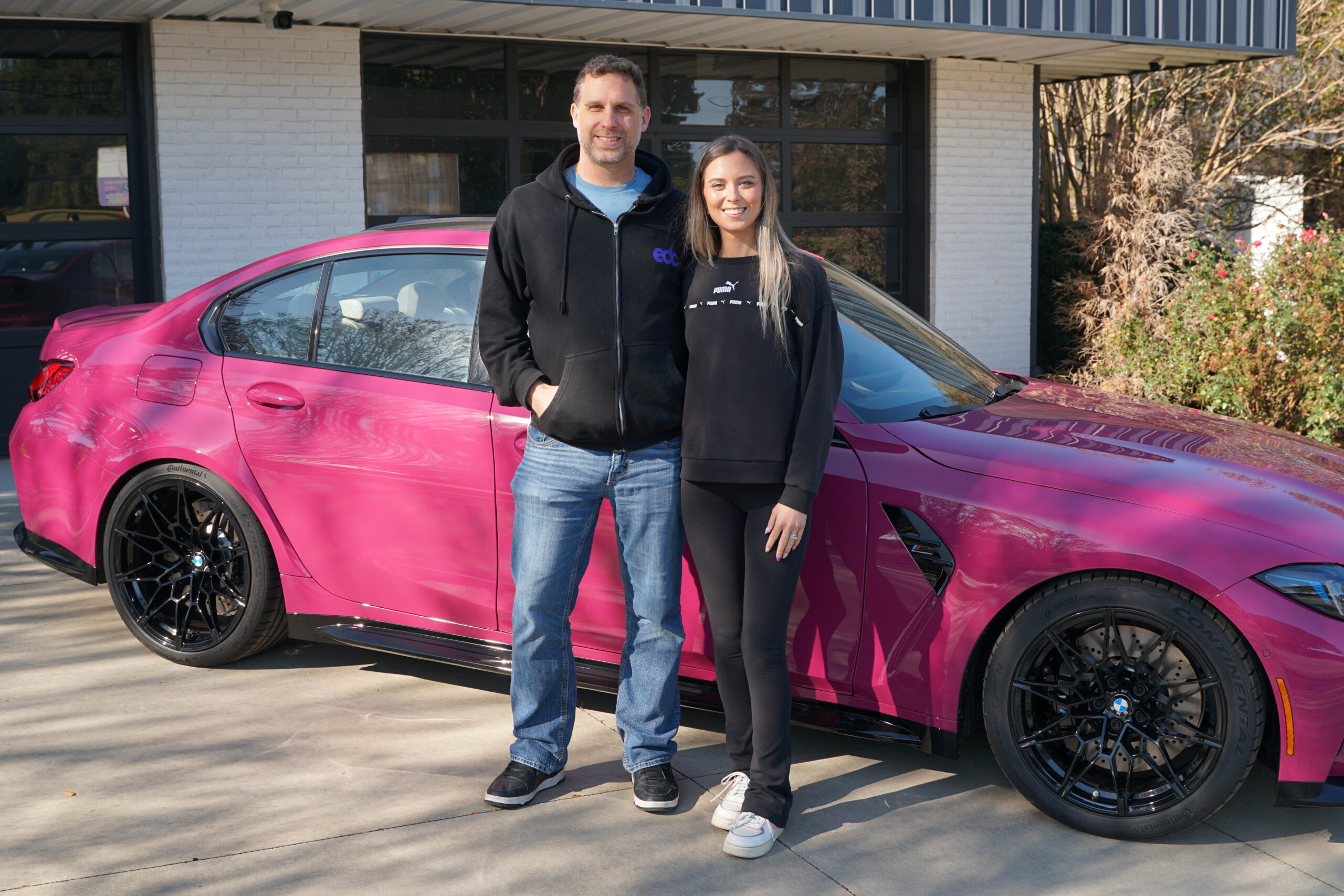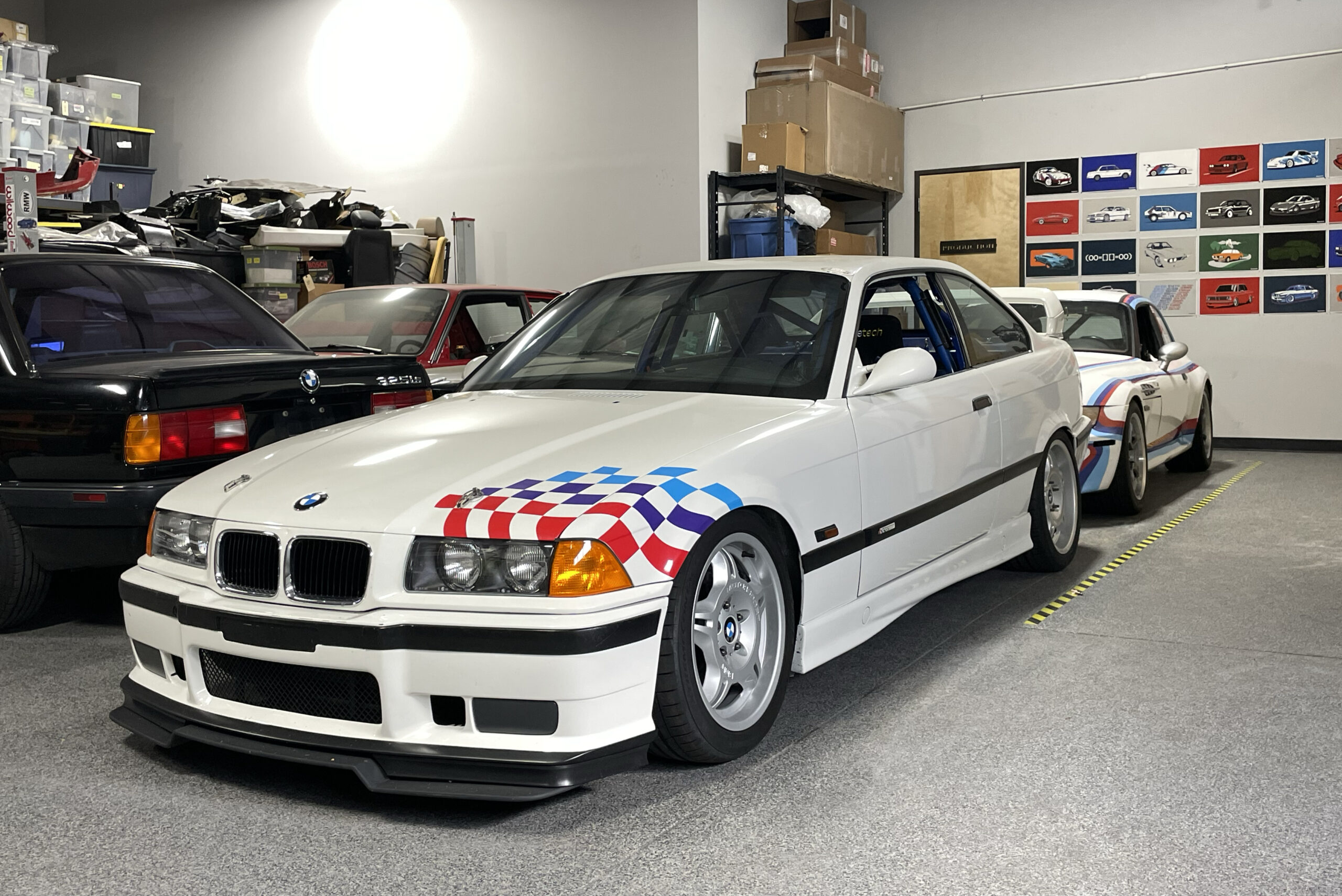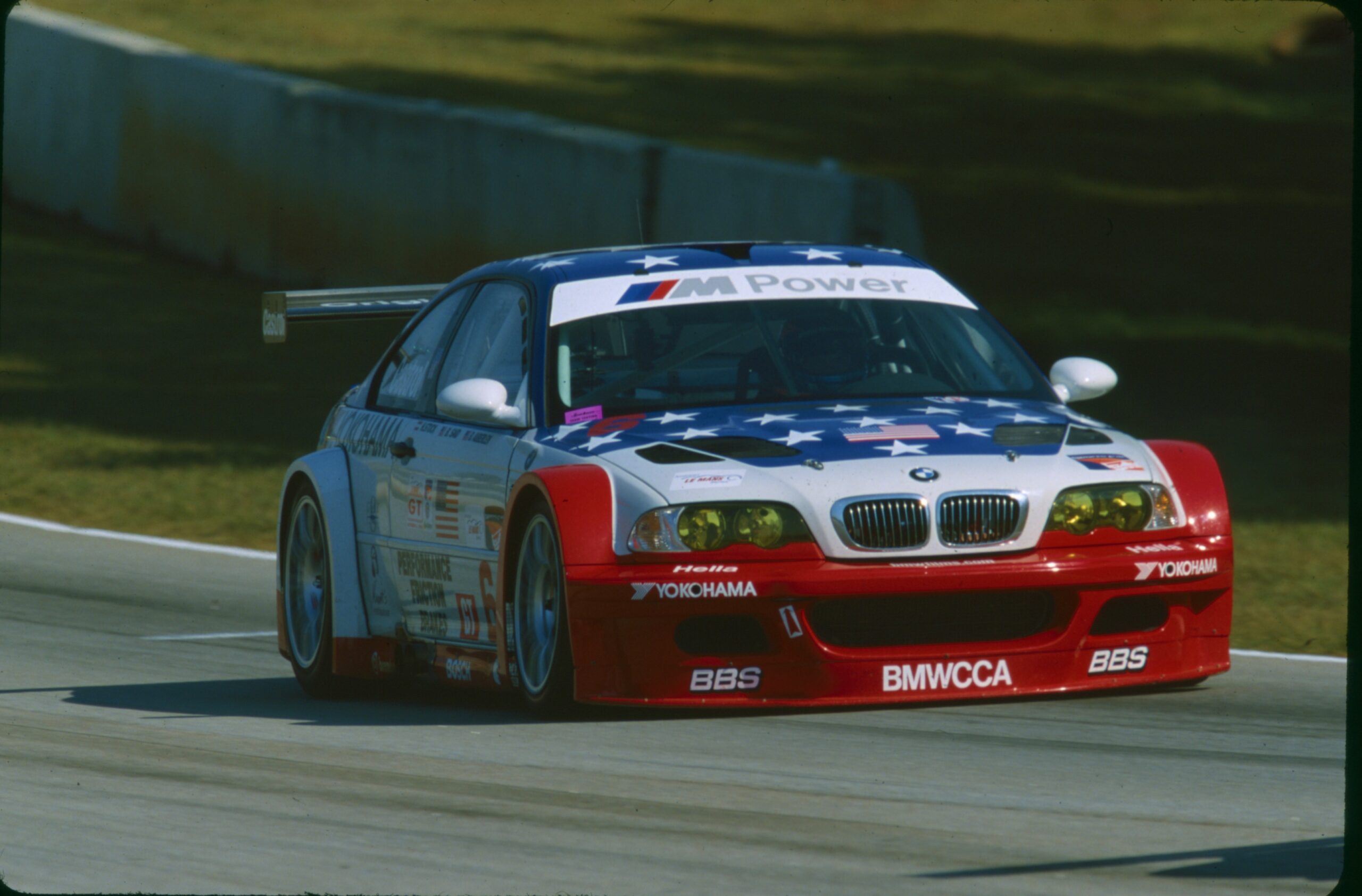The IMSA schedule is unique in that the first two races on the calendar are two of the most prestigious on the entire schedule; they’re the two longest races, and they’re both in Florida. After the opening Rolex 24 at Daytona in late January, the next race coming up in mid-March is the 12 Hours of Sebring, and IMSA had three days of official testing at the circuit last week to allow teams a lot of track time to prepare for that race.
40 cars attended the test days at Sebring, including all five of the BMWs that will compete in the IMSA WeatherTech SportsCar Championship (IWSC). BMW M Team RLL was there with both M Hybrid V8 GTP prototypes, with the #24 driven by Dries Vanthoor and Kevin Magnussen and the #25 driven by Marco Wittmann and Sheldon van der Linde. Paul Miller Racing had both of their M4 GT3 EVOs competing in the GTD Pro class there, with Madison Snow, Neil Verhagen, and Connor De Phillippi driving the #1 car and Dan Harper, Max Hesse and Jesse Krohn in the #48. Turner Motorsport was also present with their #96 M4 GT3 EVO that’s entered in GTD, with Robby Foley, Patrick Gallagher, and Jake Walker doing the driving.
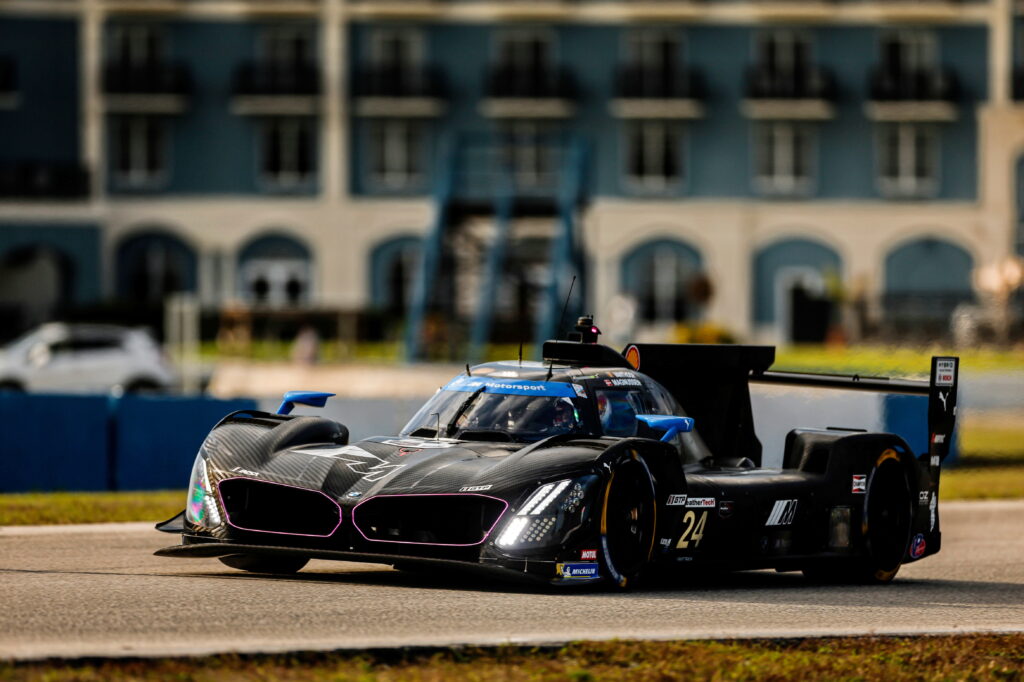
Although you can’t really look too closely at test days such as these to arrive at any conclusions on how competitive the cars are, it’s still interesting to look at lap times. In GTP, the #6 Porsche Penske Motorsport 963 consistently set some of the fastest times in the GTP class. They set the fastest time in three of the five sessions the GTP cars participated in, with the #60 Acura and the #31 Cadillac at the top in the two other sessions. The BMW M Hybrid V8 cars set their fastest times in the final practice session when they were second (Wittmann, #24) and third quickest (Vanthoor, #25) behind the #31 Cadillac. A newcomer at Sebring was the Aston Martin Valkyrie GTP car, which will be making its IMSA debut in the race. It’s the only GTP car to use a V12 engine.
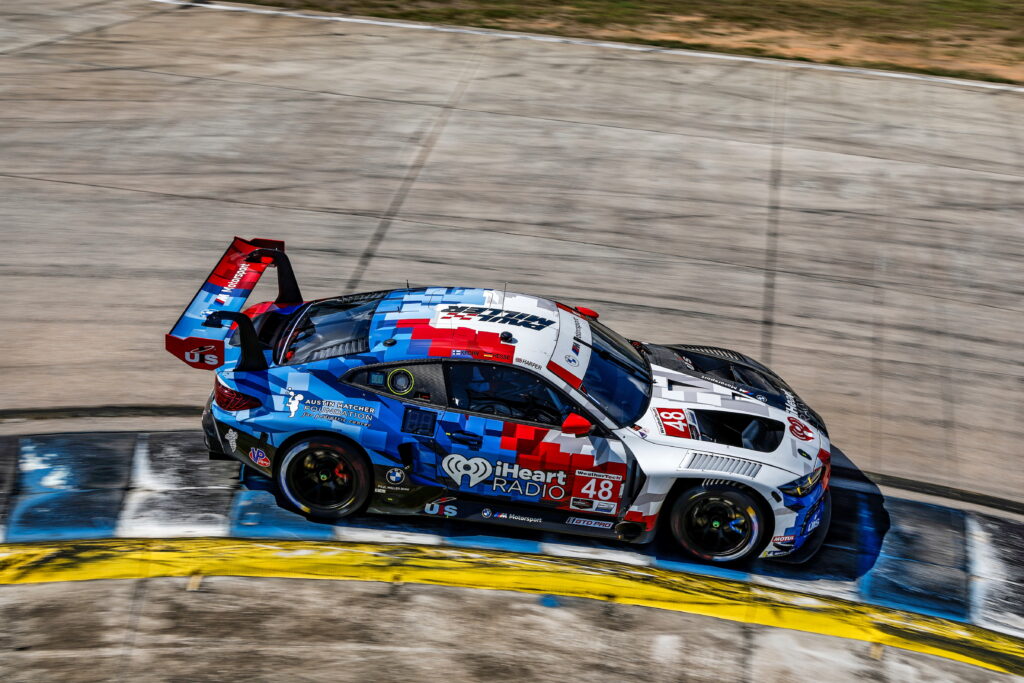
The duo of Paul Miller Racing M4 GT3 cars were at the top of the time sheets in GTD Pro in several sessions they were involved in. Jesse Krohn was third fastest in the class in the #48 car in their second session, and the two BMWs set the two fastest times by their third session, with Dan Harper fastest in the #48 and Neil Verhagen right behind him in the #1. The #48 also had the fastest times in the last two sessions for the GTD Pro cars, with Krohn and Harper setting the quickest laps. The #1 continued to be quick as well, with Connor De Phillippi setting the fourth and second fastest times in the last two sessions.
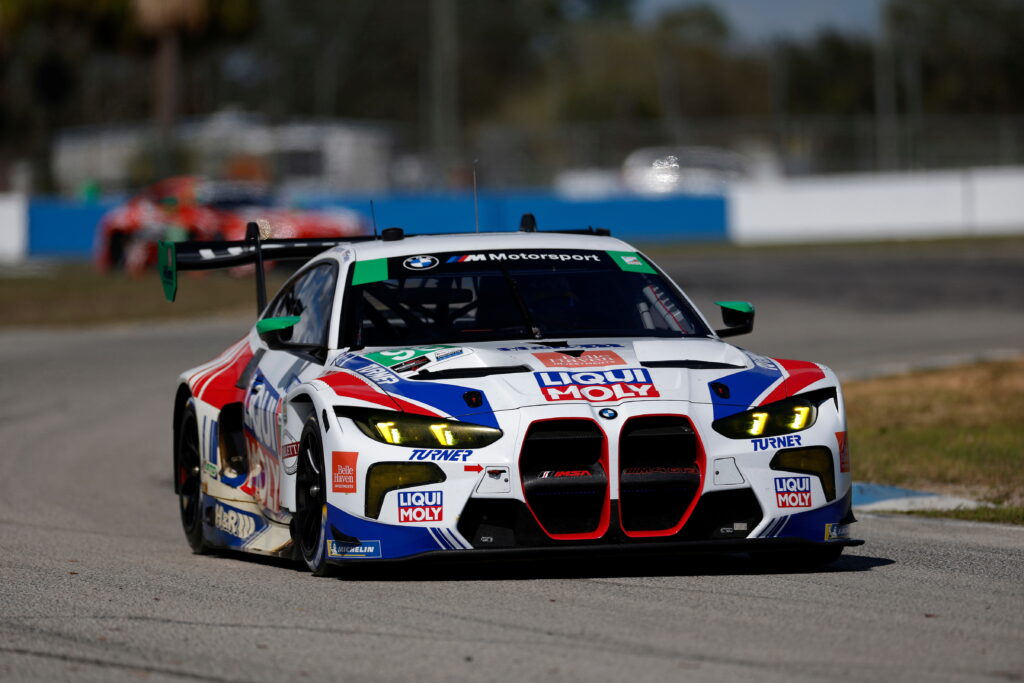
In the GTD class, the Turner Motorsport #96 M4 GT3 wasn’t there trying to set fast lap times but had a specific purpose in mind. “We were at the Sebring test because we wanted to make sure the torque sensors worked OK with the bumpy track,” said team owner Will Turner. “We were worried that the bumpy track was going to have adverse effects, but it didn’t really do anything, so I think we’re good.”
Torque sensors are new for the GTD Pro and GTD classes in 2025. They’re attached to the rear axle and provide data on torque, horsepower, and acceleration curves. The series imposed them to get a better handle on the performance among the various cars, with the end goal of equalizing performance more closely. They were put in place for the first time at the official test at Daytona back in November and were on all the cars for the Daytona race.
The 2025 12 Hours of Sebring race will be held on March 12th-15th.
—David Haueter
[Photos courtesy LAT Images]

